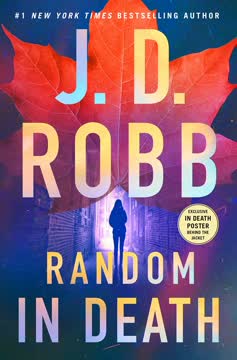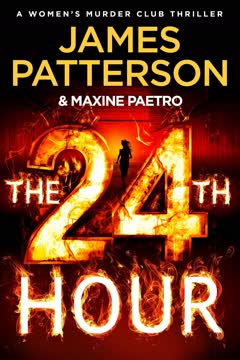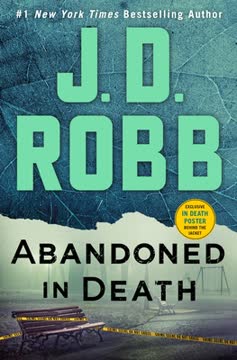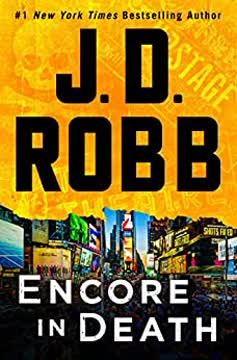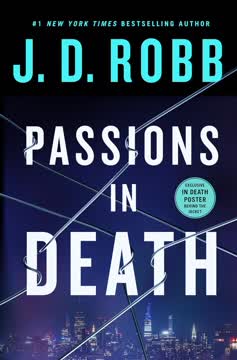Plot Summary
Club Night Turns Deadly
Sixteen-year-old Jenna Harbough is ecstatic to attend a legendary Avenue A concert at Club Rock It, hoping to hand her demo to her idol, Jake Kincade. The club is packed with teens, the music is electric, and Jenna is on top of the world—until a sharp pain in her arm interrupts her euphoria. She dismisses it as a rude jab from a stranger, but soon feels dizzy and ill. Stumbling outside, she collapses in the alley, where Jake finds her and desperately tries to save her. Despite his efforts, Jenna dies within minutes, leaving behind a devastated crowd and a mystery: who jabbed her, and why?
The Needle in the Crowd
Lieutenant Eve Dallas is called from her rare night off to the scene. The club's security is tight, alcohol is locked away, and the owners are vigilant, but Jenna's death is no accident. Eve's investigation quickly reveals a fresh needle mark on Jenna's arm and a lethal cocktail of drugs in her system. The method is chillingly impersonal: a syringe in a crowded dance floor, a random victim, and a killer who vanishes into the night. Jenna's friends recall her being jabbed by "some asshole," but no one saw the attacker's face. The randomness and efficiency of the crime unsettle Eve, who senses a predator hiding among the city's youth.
Eve Dallas on the Case
Eve's world is a blend of grit and comfort: a loving home with Roarke, her billionaire husband, and the relentless demands of her job. She notifies Jenna's parents, who are shattered by the loss of their talented, ambitious daughter. Eve's empathy for the family fuels her determination. She interviews witnesses, examines the club's security footage, and consults with her team, including her partner Peabody and tech wizard McNab. The investigation is methodical but frustrating—no clear suspect, no motive, and a killer who seems to have struck at random.
A Second Girl Falls
The city reels when another teenage girl, Arlie Dillon, collapses and dies at a Battle of the Bands event. The method is identical: a needle jab in a crowd, a rapid and fatal overdose, and no apparent connection to Jenna. Arlie's friends describe a brief encounter with a "dooser"—a short, white, awkward boy in cheap black baggies and shoes—who disappears after the attack. The randomness of the victims and the killer's ability to blend in terrify parents and teens alike. Eve realizes she's hunting a predator who could strike anywhere, anytime.
Patterns and Paranoia
Eve and her team dig into the science behind the murders. The killer uses a sophisticated, custom-made drug cocktail—pure heroin, ketamine, Rohypnol, and bacteria—delivered with a dirty needle. The method is both efficient and sadistic, designed to kill quickly and inflict maximum suffering. Consulting with profiler Dr. Mira, Eve builds a psychological profile: the killer is a teenage boy, highly intelligent, socially isolated, and driven by resentment toward girls who ignore or reject him. He craves attention and control, and the media frenzy only feeds his ego. The attacks are not truly random—they are the work of a budding incel psychopath.
The Science of Murder
The investigation leads to the world of elite private schools, high-end shopping, and scientific obsession. The killer, Francis Bryce, is the son of a wealthy pharmaceutical executive. He has access to a home laboratory, where he refines his deadly formulas and keeps meticulous records of his "projects." His privileged upbringing masks his emotional emptiness and rage. He is invisible to his peers—except as a "dooser"—and overlooked by his father, who mistakes Francis's quiet for stability. The killer's scientific precision and lack of empathy make him especially dangerous.
The Unseen Killer
Francis perfects his disguise: cheap, ill-fitting clothes bought by a personal shopper, a wig, and sunglasses. He studies his targets, times his attacks, and escapes through windows or emergency exits, leaving behind only scuff marks and a trail of devastation. He is careful, but not infallible—his mistakes begin to accumulate. Witnesses recall glimpses of him, and forensic evidence mounts. Eve's team narrows the search, using shoe brands, shopping records, and school rosters to close in on the killer's identity.
A Survivor's Scream
At a crowded movie premiere, Francis targets Kiki Rosenburg, but his plan goes awry. Kiki's bruised arm prevents a full injection, and she screams, drawing attention and forcing Francis to flee. Kiki survives, and her detailed account—along with those of her friends—provides crucial clues. For the first time, the killer's face is reconstructed from witness descriptions. The city breathes a sigh of relief, but Eve knows Francis will not stop until he achieves his "triumph."
The Hunt Narrows
Eve's team races against time, combing through private school yearbooks, shopping records, and surveillance footage. They identify Francis Bryce as the common thread: a short, awkward, brilliant boy with a history of social isolation and a mother lost to addiction. His father, Dr. Bryce, is oblivious to his son's darkness, having indulged Francis's need for privacy and ignored warning signs. The team finds Francis's secret lab, his journals, and his plans for a final, "perfect" attack.
The Face in the Yearbook
With the help of a personal shopper's records and witness sketches, Eve matches the killer's face to Francis Bryce. His journals reveal his next target: Coney Island, the site of a childhood humiliation and now the stage for his ultimate act. Francis plans to drug, rape, and kill a girl in the chaos of the amusement park, turning his fantasy of power and revenge into reality. Eve mobilizes her team for a desperate race to stop him.
The Personal Shopper's Secret
Francis's ability to operate undetected is rooted in privilege and neglect. His father's wealth provides him with resources, privacy, and a veneer of respectability. A personal shopper outfits him in conservative clothes, masking his awkwardness but also making him invisible to his peers. The investigation exposes the dangers of unchecked privilege and the failure of adults to see the warning signs in troubled youth. Francis's meticulous planning and scientific skill are chilling reminders of how easily evil can hide in plain sight.
Coney Island Showdown
Eve and her team descend on Coney Island as night falls. Francis, disguised and armed with his custom drugs, selects his next victim—a girl from his school who once rejected him. He drugs her, drags her into a dark ride, and prepares to rape and kill her. Eve, guided by witness reports and her own instincts, locates the ride and orders the lights on. In the chaos, Francis flees, but Eve chases him down and tackles him in front of a crowd. The girl is saved, and Francis is finally unmasked.
The Monster Unmasked
In custody, Francis is arrogant and remorseless, boasting of his superiority and blaming his victims for their own deaths. He confesses to the murders, the attempted rape, and his plans for more. His father, devastated by the truth, realizes too late the consequences of his neglect. The interview is a battle of wills, with Eve refusing to let Francis control the narrative. The law is clear: Francis will be tried as an adult and spend his life in prison.
Justice for Jenna
Eve personally notifies the families of Jenna, Arlie, and the other victims that justice has been served. The community mourns, but also begins to heal. Jake Kincade and Avenue A honor Jenna's memory by producing her demo and establishing a scholarship in her name. Survivors like Kiki and Delaney find support and validation. Eve reflects on the importance of empathy, vigilance, and the relentless pursuit of justice.
The Aftermath and Reflection
Exhausted but satisfied, Eve returns home to Roarke, her anchor and partner. The case has taken its toll, but also reaffirmed her commitment to standing for the dead. She and Roarke escape to their island retreat, seeking solace and renewal. The story ends with a sense of hope: evil can be random, but so can kindness, resilience, and love.
Characters
Eve Dallas
Eve is the heart of the investigation—a tough, brilliant NYPSD lieutenant haunted by her own traumatic past. Her empathy for victims and their families drives her to pursue justice at any cost. Eve's relationship with Roarke, her billionaire husband, provides her with stability and love, but she never loses sight of her mission. She is methodical, intuitive, and unafraid to confront evil, even when it hides behind privilege and youth. Eve's psychological insight and refusal to give up are key to solving the case.
Roarke
Roarke is Eve's husband and confidant, a man of immense wealth and influence who uses his resources to aid her investigations. He is calm under pressure, technologically savvy, and deeply in love with Eve. Roarke's own troubled childhood gives him insight into the minds of both victims and perpetrators. He provides emotional support, logistical help, and, at times, a much-needed escape from the darkness of Eve's work.
Delia Peabody
Peabody is Eve's trusted partner, known for her warmth, humor, and sharp instincts. She balances Eve's intensity with compassion and practicality. Peabody's background as a Free-Ager gives her a unique perspective on family and community. She is skilled in both fieldwork and interrogation, and her rapport with witnesses—especially young people—proves invaluable. Peabody's relationship with McNab adds a touch of levity to the team dynamic.
Francis Bryce
Francis is the antagonist—a privileged, brilliant, and emotionally stunted teenager. Scarred by his mother's addiction and his father's neglect, he develops a deep-seated hatred for girls who ignore or reject him. Francis channels his intelligence into chemistry, creating deadly drug cocktails and meticulously planning his attacks. He is invisible to his peers, blending in as a "dooser," and overlooked by adults. His arrogance, misogyny, and lack of empathy make him a chilling and believable villain.
Dr. Nolan Bryce
Dr. Bryce is a successful pharmaceutical executive who indulges his son's need for privacy and mistakes quiet for stability. He is devastated by the revelation of Francis's crimes, realizing too late the consequences of his neglect. Dr. Bryce's character highlights the dangers of privilege without attention and the failure of adults to see the warning signs in troubled youth.
Jenna Harbough
Jenna is a vibrant, creative teenager with dreams of becoming a musician. Her death is the catalyst for the investigation and a symbol of lost potential. Jenna's family and friends are left shattered, but her legacy lives on through the scholarship and music produced in her name. She represents the innocence and promise destroyed by random violence.
Arlie Dillon
Arlie is a popular, fashion-loving girl with a close-knit group of friends. Her murder reinforces the randomness of the killer's attacks and the terror he spreads. Arlie's family and friends provide crucial insights into the killer's methods and psychology.
Kiki Rosenburg
Kiki is a tough, resilient teenager who survives the killer's attack due to a lucky bruise. Her detailed account and willingness to help the investigation are instrumental in identifying Francis. Kiki's recovery and empathy for other victims highlight the importance of community and support.
Jake Kincade
Jake is the lead guitarist of Avenue A and the unwitting witness to Jenna's death. His grief and determination to honor Jenna's memory by producing her music provide a counterpoint to the darkness of the case. Jake's relationship with reporter Nadine Furst adds depth to his character.
Dr. Mira
Dr. Mira is the NYPSD's top profiler, whose psychological analysis helps Eve understand the killer's motives and methods. She is calm, compassionate, and deeply perceptive, offering both professional and personal support to Eve and her team.
Plot Devices
Randomness as a Weapon
The killer's method—injecting random girls in crowded venues—creates a sense of terror and unpredictability. This randomness is a deliberate strategy, allowing Francis to blend in and avoid detection. However, the attacks are not truly random; they are driven by deep-seated resentment and a desire for control. The randomness also serves as a commentary on the vulnerability of youth and the dangers lurking in everyday life.
Science and Privilege
Francis's scientific skill and access to resources are central to his crimes. His home laboratory, funded by his father's wealth, enables him to create custom drug cocktails and evade suspicion. The use of science as a weapon highlights the dangers of unchecked privilege and the failure of adults to monitor and guide their children. The contrast between Francis's intelligence and his emotional emptiness is a recurring theme.
Psychological Profiling
Eve's collaboration with Dr. Mira and her own psychological insight are key to solving the case. The investigation is as much about understanding motive and pathology as it is about gathering evidence. The killer's journals, patterns, and escalating violence are analyzed to predict his next move and prevent further tragedy.
Foreshadowing and Escalation
The killer's mistakes—scuff marks, witness glimpses, shopping records—accumulate over time, narrowing the investigation. The failed attack on Kiki foreshadows the killer's eventual capture and his need to escalate to achieve satisfaction. The narrative structure builds tension by alternating between the killer's perspective and the investigation, culminating in a final showdown.
Analysis
Random in Death is a chilling exploration of how evil can hide in plain sight, especially when masked by privilege, intelligence, and social invisibility. J.D. Robb uses the framework of a police procedural to examine the psychology of incel violence, the dangers of unchecked resentment, and the failures of adults to see and intervene in the lives of troubled youth. The novel is as much about the resilience of survivors and the power of community as it is about the hunt for a killer. Through Eve Dallas's relentless pursuit of justice, the story affirms the importance of empathy, vigilance, and the refusal to let random acts of violence define our lives. The book's message is clear: evil may be random, but so is kindness, courage, and the determination to stand for the dead.
Last updated:
Review Summary
Random in Death is the 58th installment in J.D. Robb's In Death series. Readers praise the book's fast-paced plot, character development, and police procedural elements. The story follows Lieutenant Eve Dallas as she investigates a series of random killings targeting young women. Many reviewers note the author's ability to keep the long-running series fresh and engaging. While some criticize repetitive elements, most fans find the book thrilling and satisfying, appreciating the familiar characters and futuristic setting.
In Death Series
Similar Books
Download PDF
Download EPUB
.epub digital book format is ideal for reading ebooks on phones, tablets, and e-readers.
